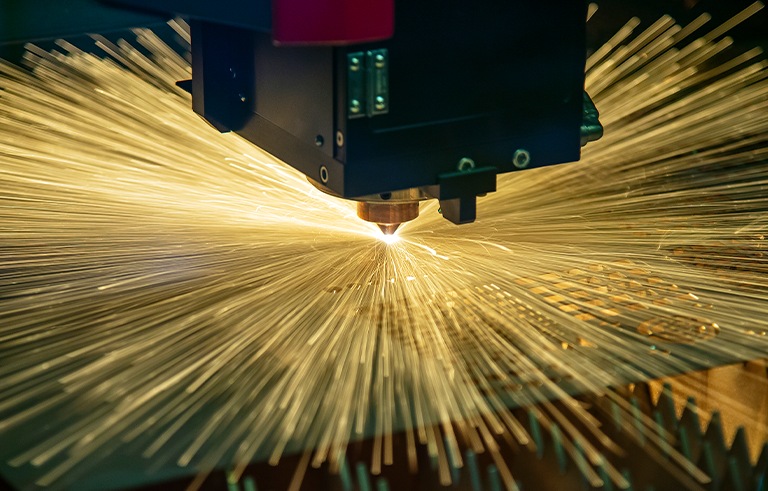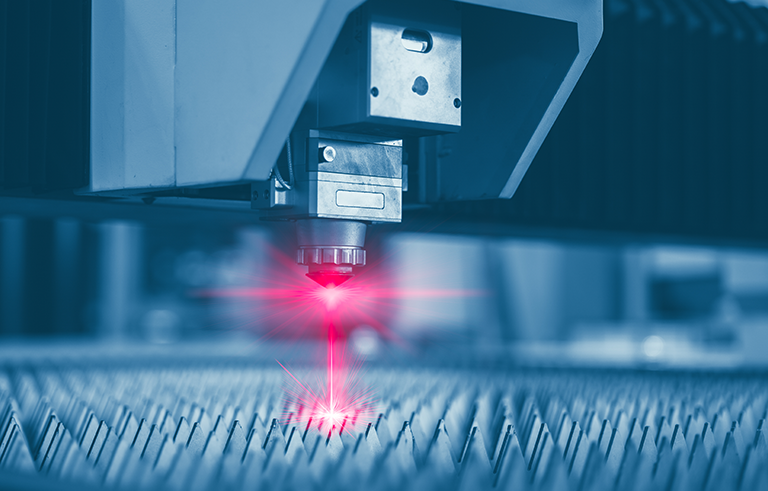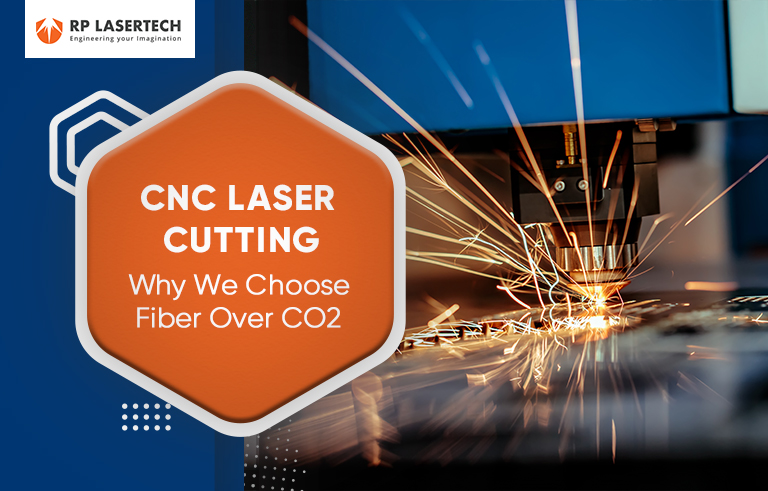Due to customers’ stringent design and manufacturing requirements, the demand for more sophisticated machining technologies has remained constant over the years. In today’s world, CNC sheet cutting has been one tool that has helped machinists meet these requirements.
Laser cutters are CNC machines that use a laser beam to engrave, cut, mark, or mark a material using computer numerical control. The cutting of intricate shapes and holes is particularly accurate; it is highly accurate due to its unique design and operation.
There are 2 processes involved in CNC laser cutting, and we will explain their differences in this article.
What is Fiber laser cutting?

A fiber laser CNC steel cutting process utilizes a solid-state laser that bead melts and pierces metals, resulting in a clean, precise, and efficient metal cut. This technology uses optical fibers instead of gas or crystals as a laser medium, hence fiber laser cutting.
As lasers produce concentrated light, optical fibers can increase this intensity, which is why fiber is used to elevate lasers to higher powers.
Fibre laser cutters can cut a range of materials and thicknesses depending on the capacity of the equipment. Most fiber laser machines can cut up and cut stainless steel up to 10mm thick.
What is CO2 Laser Cutting?

High-intensity light particles are created by colliding light particles created by CO2 lasers. These light particles collide with each other to create high-powered particles that can cut through thicker materials relatively easily.
Contrary to fiber lasers, CO2 CNC metal cutting operates differently by using reflection and refocusing rather than focal lenses like fiber lasers, and the beam path delivery system works differently from the fiber lasers.
CO2 lasers are generally more cost-efficient than fiber lasers. Although it is cheaper in the short term, it is still more economical in the long run. Operating costs can be very high for CO2 lasers since they consume a lot of energy.
What is the difference between CO2 and Fiber Laser?

The debate between CO2 and fiber laser requires careful consideration of various factors. A number of factors must be considered, from energy sources and light wavelengths to the cutting process parameters, such as speeds and precision.
The following is a head-to-head comparison of fiber vs. CO2 lasers that addresses your questions.
|
Fiber lasers emit light from LEDs, concentrating it with fiber optical lenses to amplify it.
However, CO2 lasers generate waves that are powerful enough to cut through different objects easily by stimulating mixtures of gases such as CO2, N2, and Xe. |
|
A fiber laser has extremely high efficiency. Compared to CO2 lasers, fiber lasers consume 30% less power, enabling them to complete tasks more quickly and with fewer resources. |
|
Infrared lasers such as CO2 and fiber work on the same wavelength. In general, CO2 lasers emit wavelengths between 10,600 nm and 2200 nm, while fiber lasers emit wavelengths between 780 and 2200 nm. |
|
Regarding thinner workpieces, fiber lasers offer much better-cutting speed. The speed of 2 KW fiber lasers is usually comparable to that of 5 KW or 6 KW CO2 lasers. Because fiber lasers have such a high power density, they are mainly responsible for this. CO2 lasers are slower than optical lasers because their power is concentrated at a single point. |
|
Fiber lasers are better when we talk about the exact stability and precision that can be achieved. The manufacturing sector pays attention to another aspect of precision, which relates to the edge smoothness of CNC cutting sheets. As a result, CO2 lasers are much better in this area, so you should decide which is more appropriate for your needs. |
|
Regarding metal sheets, fiber laser machines have a cutting range that can go as far as 13mm on a single sheet. The high-speed versions can cut aluminum up to 30mm, but they are extremely expensive.
In contrast, CO2 lasers are limited only by their power. CO2 lasers can cut through various widths depending on their wattage. |
|
Fiber lasers are relatively simple compared to CO2 lasers. They do not require any complex or complicated systems, which also makes them easier to operate as well as learn to operate. |
|
CO2 and fiber lasers require different initial investments. The technology is fairly new, and only a few manufacturers manufacture fiber lasers. Fiber lasers are, therefore, quite expensive. However, the machines you need for CO2 lasers are less expensive than those for other lasers because they’ve been around for a while. |
What applications can be cut with a fiber and CO2 Laser?
Lasers based on CO2 have dominated the market long and have been around longer than fiber lasers. The development of fiber lasers, however, has led to an increase in the number of companies replacing their CO2 machines with fiber lasers due to the advent of fiber lasers.
Traditionally, CO2 lasers have been used in pharmaceutical manufacturing, food production, electronic component fabrication, fabric cutting, and building industries. In recent years, fiber lasers have gained popularity due to their excellent cut quality, high precision, and rapid cutting speeds in the medical, aerospace, automotive, and electronics industries.
How to choose the right type of machine for you and your business
A CNC laser cutting service specializing in laser cutting would seem to be best regarding the total cost of purchase, maintenance, and operation. Due to its focus on consistency, quality, and competitive price, RP Lasertech has a tremendous reputation in the market.
You can cut whatever metal you utilize with our high-performance fiber or CO2 laser cutters to create high-quality, precision parts that satisfy your customers.
From an industry-leading manufacturer of metal fabrication equipment, we offer fiber laser cutting and CO2 laser cutting systems that offer a range of innovative features:
- Sizes and speeds to suit any need
- Provide a wide range of capabilities, including automation
- Faster throughput, higher accuracy, and better parts
- Reduce waste by helping
- Achieve maximum productivity and profitability
Final Thoughts
RP Lasertech‘s engineers are available to discuss the specific requirements for CNC cutting metal sheets and how we can help you meet them with the right CNC cutting machine for your needs.


